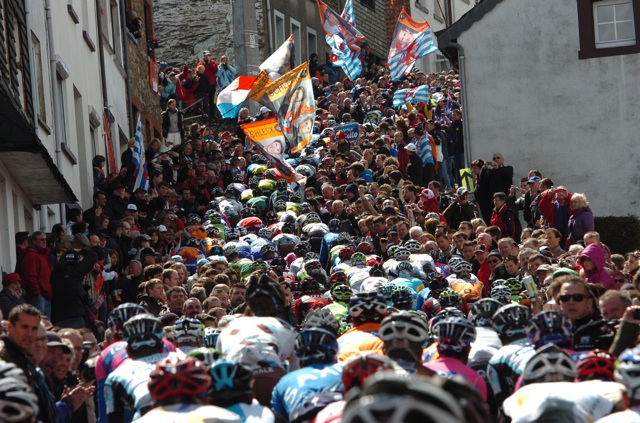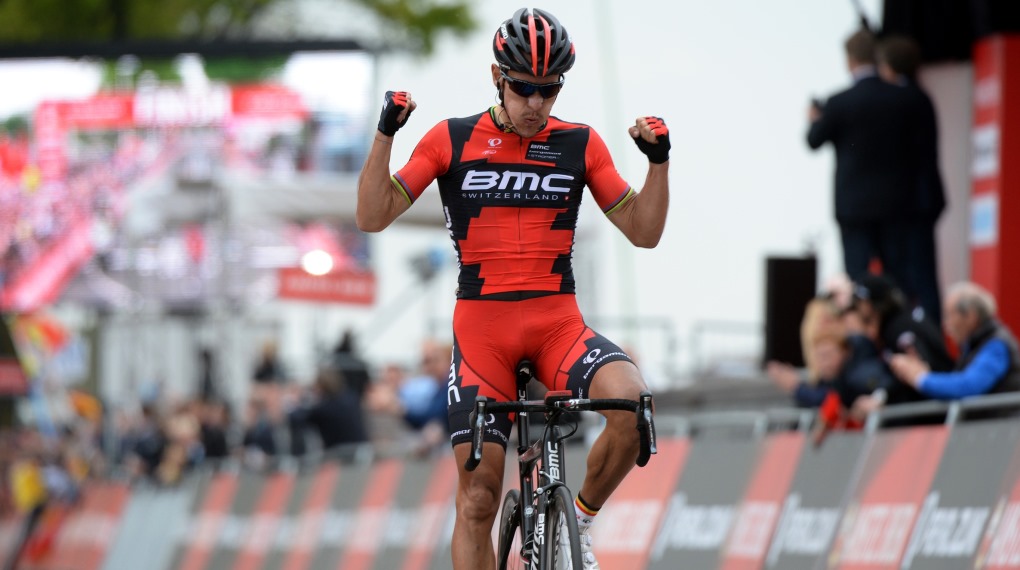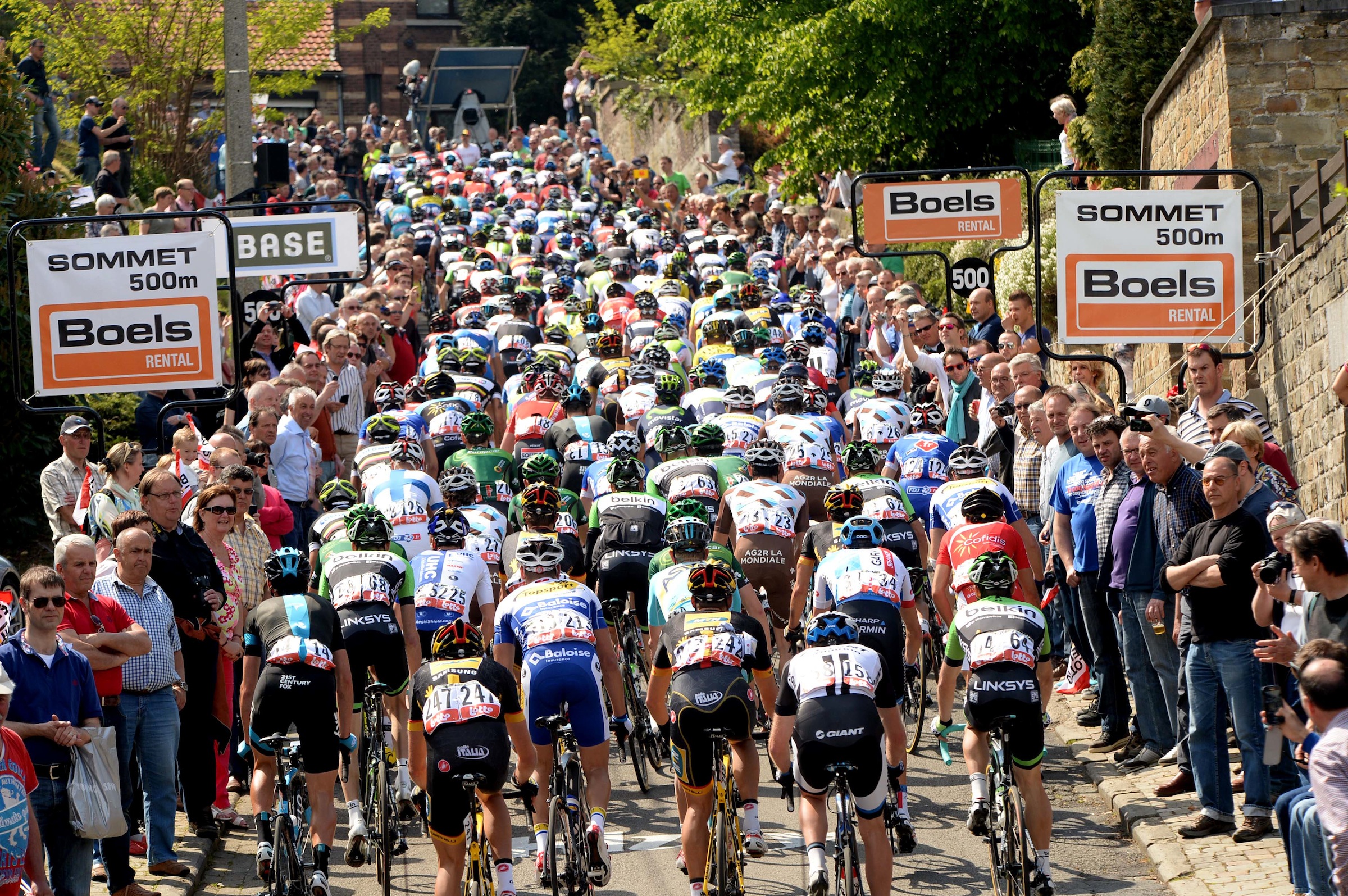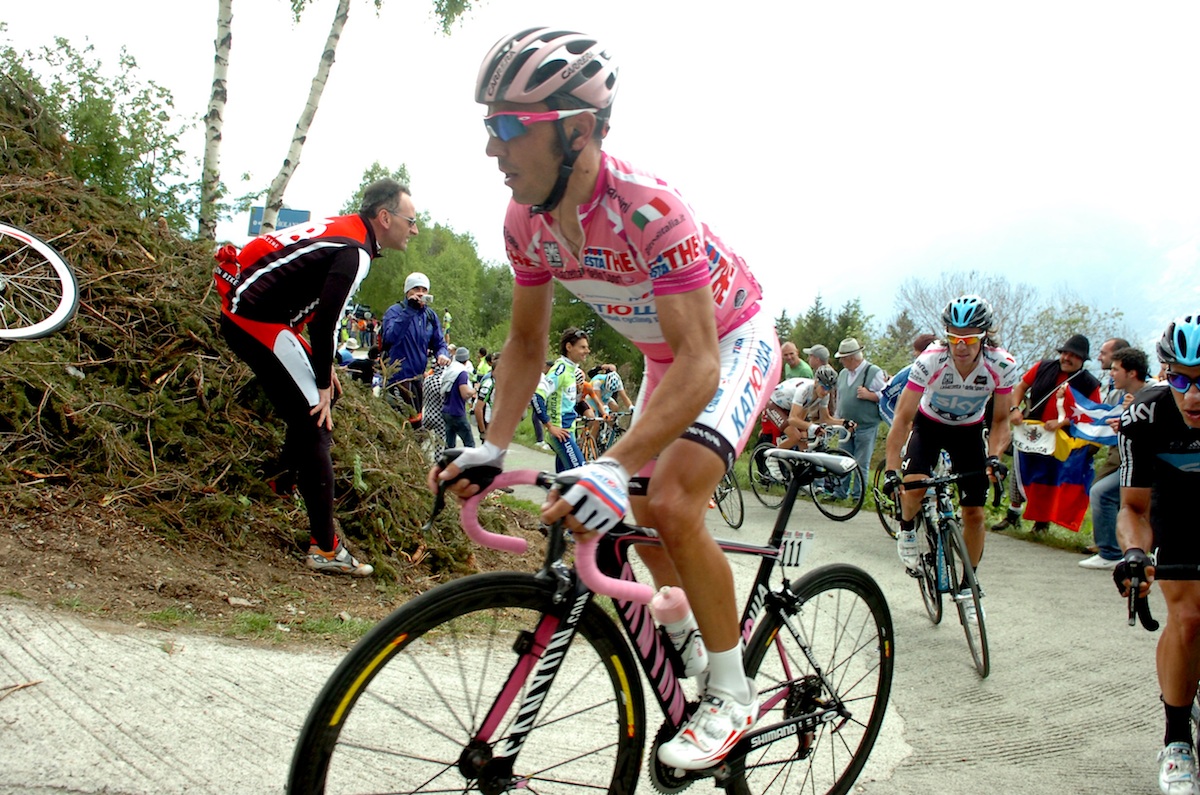Liege-Bastogne-Liege
-

Joaquim Rodriguez (Katusha, left) and Dan Martin (Cannondale-Garmin, right) race up the final, uncategorised ascent at Liege-Bastogne-Liege (Pic: Sirotti)
-

Each of the Ardennes Classics has its own distinct flavour, but Liege-Bastogne-Liege is the daddy of them all
-

Philippe Gilbert: Wallonia's favourite son (Pic: Sirotti)
-

The 2014 La Fleche Wallonne delivered another thrilling denouement on the Mur (Pic: Sirotti)
Liege-Bastogne-Liege
Three races make up the Ardennes Classics and Liege-Bastogne-Liege – or La Doyenne (‘the oldest’) – is both literally and figuratively the climax of the week.
This year’s edition comes on Sunday April 26, after the Amstel Gold Race on April 19 and La Fleche Wallonne on April 22. Each race has its unique appeal but La Doyenne gets its nickname from the fact that the first edition was held in 1892, making it the oldest of cycling’s five Monument Classics (Milan-San Remo, Tour of Flanders, Paris-Roubaix, Liege-Bastogne-Liege and Giro di Lombardia), four years older than Paris-Roubaix.
It’s a brutal race packed with short, hard climbs and culminating with the ascent of the Côte de Saint Nicholas, a 1.2km, 8.9 per cent leg burner that would be comparatively easy if you started at the bottom, but coming right near the end of a 253km epic feels like pedalling in treacle.
In fact, a lot of people consider La Doyenne to be the toughest one-day race on the calendar, owing to both its length and the fact that the climbs are packed into the tail end of the race. Unsurprisingly, Eddy Merckx holds the record for most wins with five.
The most famous point in the race is undoubtedly the climb of La Redoute. Packed with ardent Belgian cycling fans and, more recently, fans from all over the world, the 2km climb has an average gradient of 8.9 per cent, but sections of nearly 15 per cent. Of course, what really makes it hard is the speed at which the peloton will attack it, meaning anyone who isn’t on a good day can find themselves out the back pretty quickly. You’ll also notice a lot of the graffiti on the road will be one word, PHIL, in honour of local hero Philippe Gilbert.
Even in the oldest of Classics, though, there’s one edition that stands out above all others. Bernard Hinault’s win in 1980 came in the freezing temperatures and driving snow; a race so brutal that half of the 174-strong field had abandoned after just half-an-hour.
But The Badger stubbornly ploughed on, caught the early breakaway and proceeded to ride the remaining 80km to Liege on his own, winning by nine minutes and 24 seconds. But Hinault didn’t escape the epic unscarred. To this day he still suffers in his hands when the temperature drops, and has little feeling in the tips of some of his fingers.





